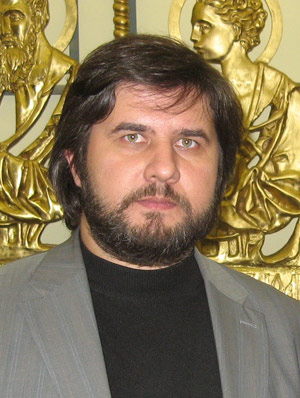Currently in Russia a movement has ensued to acquaint people there with the ascetical labors of their brothers in the faith. It is entitled, “From Nativity to Resurrection”, and includes representatives from Orthodox Churches and organizations of Greece, Cyprus, Russia, and the Greek diaspora of Kazakhstan—places where the memory of those who suffered for their faith under Ottoman rule is kept alive. One of the organizers of this cultural-enlightenment forum, Pavel Illarionov, tells us about the lessons we can learn from the history of one relatively recent mass persecution of Christians.
* * *
—Why are representatives of the Russian, Constantinople, Cypriot, and Greek Orthodox Churches gathering? What events are they recalling? 
Pavel Illarionov
—It is well known that in the history of the Balkan peoples, the many centuries of the Ottoman yoke are of particular significance. This historical period began after the fall of Constantinople in 1453. Persecution of Christians in the Ottoman Empire continued until the twentieth century. Many people died as martyrs in the 1920’s as well, during the time of the Pontan genocide, when Greeks from the Black Sea coastal area of Turkey were relocated en masse to territories of the former Russian Empire. What they had to experience is somewhat familiar to our (Russian) people as well, who were also subjected in the twentieth century to a long period of persecution against Christians.
In recent years, the new martyrs of Russia have gained veneration in Greece and Cyprus, and before the Communist Revolution, Russians honored the memory of those courageous Orthodox peoples who suffered under Turkish rule. The Russian Church venerated the Greek, Serbian, and Bulgarian saints who died for their faith. This commemoration even determined to a great extent the eastern politics of the Russian Empire.
Now we are reviving this commemoration; the initiators of this revival are the descendents of those relocated Greeks who are now living in the countries of the former USSR. This is a continuation of the spiritual communion between our Orthodox nations.
Incidentally, our countrymen of Greek descent had to endure persecution in our country as well—during the Stalinist era they were also massively relocated to Kazakhstan. There are still many Greek communities there, for whom this theme is very important.
—Where will “From Nativity to Resurrection” take place, and what events does it include?
—The events will take place throughout the year 2012. It begins in Moscow and will go on to Rostov-on-the-Don, Alma Ata, and then Mt. Athos.
At the information agency RIA Novosti on January 23 there will be a round table discussion; participants will include monks from Mt. Athos, Russian priests, and Orthodox community organizations.
Their main goal is to achieve a worthy revival of history memory. They will ask for support from His Holiness Kirill, Patriarch of Moscow and All Russia.
On January 25 there will be a solemn ceremony at the close of the twentieth International Nativity Readings in the meeting hall of the Christ the Savior Cathedral, which will include a memorial concert entitled, “Confessors of Orthodoxy After the Fall of the Empire”, with the participation of the best Greek and Russian artists and musicians. The organizer of this event is conductor Constantine Haralampidis. Participants in the Nativity Readings from various dioceses are welcome to attend the concert, as are any others who wish to come.
—What saints are depicted on this icon? 
New Martyrs of the Turkish Yoke.
—This icon is the first of a series that is being created on Mt. Athos. There is currently work being done to create a new iconography of the Synaxis of All Holy New Martyrs and Confessors of Greece, Asia Minor, Pontus, and Cyprus. It is being based upon the icon of the New Martyrs of Russia. There has not been a similar icon in Greece—different new martyrs have been venerated in different regions, but now the time has come to unite the hagiographic research completed by the Constantinople, Greek, and Cypriot Churches in their various dioceses. Within the framework of our events, we will distribute copies of this icon, once it is finished, to all corners of the Orthodox world; this will include Russian churches.
—Can the veneration of the New Martyrs of Russia and of Greece be compared?
—The significance of the ascetical labors and feats of their own countrymen has always been very important to the national identity of the Greek people. However, not only does it unite Greeks, but also Russian and Greek people on their historical path. It is the struggle for the faith and the overcoming of the fear of death which became the basis for spiritual renewal in both countries.

